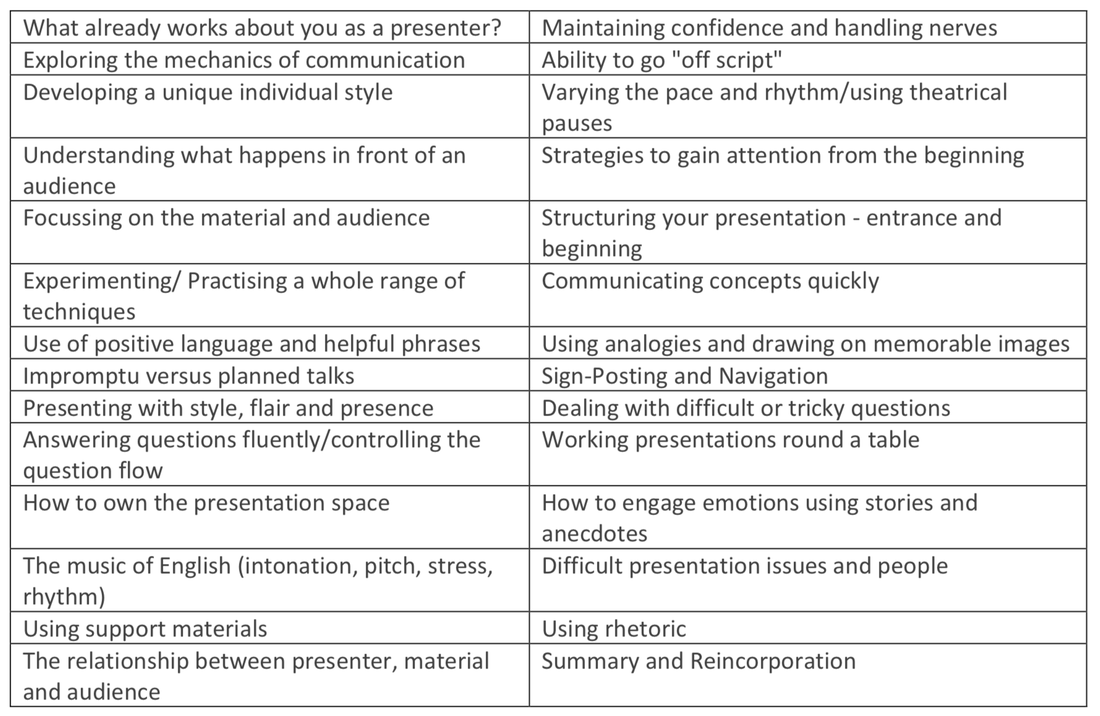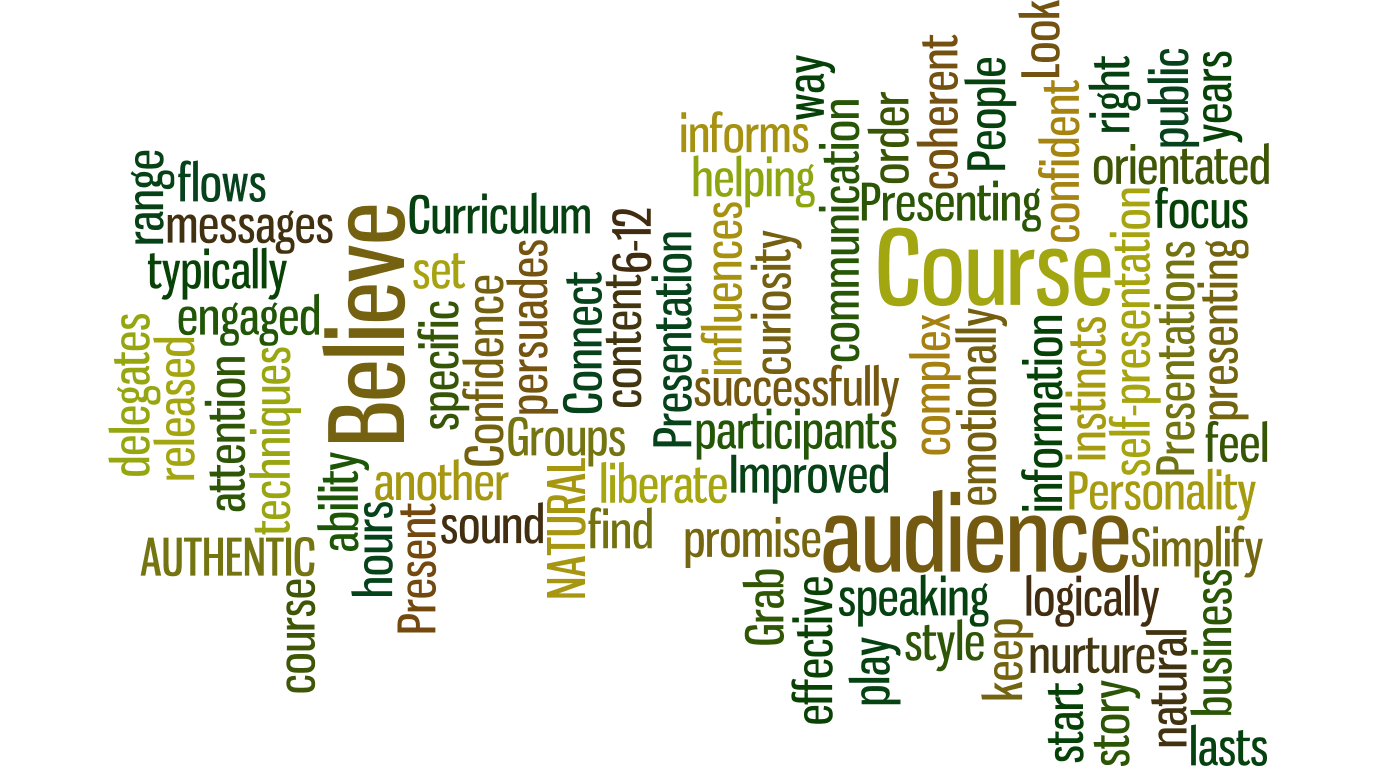PRESENTING IN ENGLISH COURSE
Improved Presentations
Presenting with Personality and Confidence
People Believe when You Believe
|
Our promise is to liberate course delegates, helping them to find their NATURAL and AUTHENTIC communication style. In order to do this we nurture another set of instincts - our natural ability to play and then our curiosity can be engaged and released.
|
Course Curriculum
The Presentation Course lasts between 8 to 20 hours. Groups typically range from 6-12 participants.
• Connect emotionally with your audience in a way that successfully persuades, influences and informs.
• Look, sound and feel confident - as if you have been presenting for years
• Grab audience attention right from the start and keep it.
• Simplify complex information and messages
• Present a coherent story which flows logically
The content is very business orientated, the focus being on effective self-presentation and specific public speaking techniques.
• Connect emotionally with your audience in a way that successfully persuades, influences and informs.
• Look, sound and feel confident - as if you have been presenting for years
• Grab audience attention right from the start and keep it.
• Simplify complex information and messages
• Present a coherent story which flows logically
The content is very business orientated, the focus being on effective self-presentation and specific public speaking techniques.
1. The principles of an effective presentation
Preparation, Passion/Belief in your material, Simplicity of language and sentence structure, Use of Rhetoric, Knowing much more than you wish to communicate about your topic, The music of spoken English (intonation, pitch, stress, rhythm), Function words versus content words
2. Practical Games and Exercises to release a sense of spontaneity, fun and focus
These exercises are based on improvisation techniques and make verbal expression enjoyable and spontaneous for students. They also develop students’ instincts for cooperation and enhance their listening skills. The exercises are interweaved with a graduated series of short and informal presentations, talks and mock interviews. These become gradually more demanding as we progress.
3. The Incorporation of Structure, Planning and Discipline
Students move from presenting in fours, to twos to individual talks on various topics (some serious, some more frivolous). We cover such areas as signposting, effective introductions, transitions, summaries and taking questions. We also cover the use of theatrical devices such as extended pauses, silence, owning the presentation space and varying the rhythm of speech.
4. Final Presentations
In the final lesson each student prepares and then presents a talk – with PowerPoint slides or other visual aids.
Preparation, Passion/Belief in your material, Simplicity of language and sentence structure, Use of Rhetoric, Knowing much more than you wish to communicate about your topic, The music of spoken English (intonation, pitch, stress, rhythm), Function words versus content words
2. Practical Games and Exercises to release a sense of spontaneity, fun and focus
These exercises are based on improvisation techniques and make verbal expression enjoyable and spontaneous for students. They also develop students’ instincts for cooperation and enhance their listening skills. The exercises are interweaved with a graduated series of short and informal presentations, talks and mock interviews. These become gradually more demanding as we progress.
3. The Incorporation of Structure, Planning and Discipline
Students move from presenting in fours, to twos to individual talks on various topics (some serious, some more frivolous). We cover such areas as signposting, effective introductions, transitions, summaries and taking questions. We also cover the use of theatrical devices such as extended pauses, silence, owning the presentation space and varying the rhythm of speech.
4. Final Presentations
In the final lesson each student prepares and then presents a talk – with PowerPoint slides or other visual aids.


